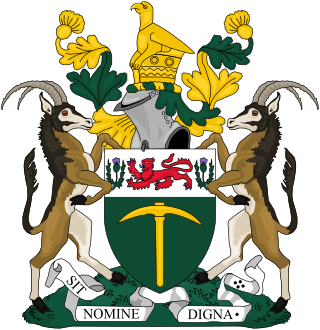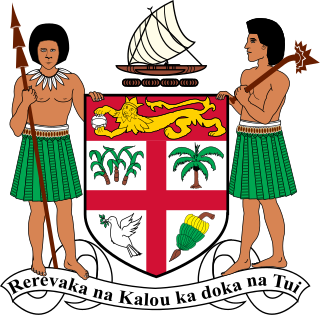 |
|---|
General elections were held in Northern Rhodesia on 22 May 1926 to elect the Legislative Council for the first time. [1] A further four members were appointed by the Governor in September 1926. [2]
 |
|---|
General elections were held in Northern Rhodesia on 22 May 1926 to elect the Legislative Council for the first time. [1] A further four members were appointed by the Governor in September 1926. [2]
The Legislative Council Ordinance 1925 published in June 1925 provided for the election of members to the Legislative Council, [3] which had been established in 1924. Five constituencies were created; Eastern, Livingstone and Western, Midland, Northern and Southern. [4] Voting was restricted to British subjects, with suffrage granted to men aged 21 or over and women aged 25 or over, as long as they had lived in their constituency for at least six months and had property worth £250 or an annual salary of at least £200. [3] There were a total of 1,036 registered voters. [5]
| Constituency | Settlements | Registered voters |
|---|---|---|
| Eastern | Abercorn, Chiengi, Chinsali, Fort Jameson, Fort Rosebery, Kasama, Kawambwa, Lundazi, Luwingu, Mpika, Mporokoso, Petauke, Serenje | 170 |
| Livingstone & Western | Balovale, Kalabo, Lealui, Livingstone, Mankoya, Nalolo, Sesheke | 331 |
| Midland | Feira, Lusaka, Mumbwa | 159 |
| Northern | Broken Hill, Kasempa, Mkushi, Mwinilunga, Ndola, Solwezi | 201 |
| Southern | Kalomo, Mazabuka, Namwala | 175 |
| Source: Legislative Council of Northern Rhodesia [5] | ||
In two constituencies, Eastern and Livingstone and Western, there was only one candidate, both of whom were elected unopposed. Two candidates ran in Northern and Southern, whilst three ran in Midland. [1]
| Constituency | Candidates | Votes | % | Notes |
|---|---|---|---|---|
| Eastern | Herbert Goodhart | Unopposed | ||
| Livingstone and Western | Leopold Moore | Unopposed | ||
| Midland | Douglas Stirke | Elected | ||
| John Powell | ||||
| Edward Copeman | ||||
| Northern | Louis Gordon | 105 | 66.0 | Elected |
| William Doull | 54 | 34.0 | ||
| Southern | Thomas Henderson Murray | Elected | ||
| Frederick Clarke | ||||
| Nominated | Henry Parkin | |||
| John Smith | ||||
| Arthur Stephenson | ||||
| Tudor Trevor | ||||
| Source: Northern Rhodesia Gazette 1926, East Africa [6] | ||||

Northern Rhodesia was a British protectorate in Southern Africa, now the independent country of Zambia. It was formed in 1911 by amalgamating the two earlier protectorates of Barotziland-North-Western Rhodesia and North-Eastern Rhodesia. It was initially administered, as were the two earlier protectorates, by the British South Africa Company (BSAC), a chartered company, on behalf of the British Government. From 1924, it was administered by the British Government as a protectorate, under similar conditions to other British-administered protectorates, and the special provisions required when it was administered by BSAC were terminated.
Electoral systems of the Australian states and territories are broadly similar to the electoral system used in federal elections in Australia.

Elections in Zambia take place within the framework of a multi-party democracy and a presidential system. The President and National Assembly are simultaneously elected for five-year terms.

Elections in Southern Rhodesia were used from 1899 to 1923 to elect part of the Legislative Council and from 1924 to elect the whole of the Legislative Assembly which governed the colony. Since the granting of self-government in 1923, Southern Rhodesia used the Westminster parliamentary system as its basis of government. The Political party that had most of the seats in the Legislative Assembly became the government. The person in charge of this bloc was the Premier, later renamed Prime Minister, who then chose his cabinet from his elected colleagues.
The Southern Rhodesia Legislative Council election of March 17, 1902 was the second election to the Legislative Council of Southern Rhodesia. No change was made in the administration of the elections compared with the first elections three years previously, so the Legislative Council continued to comprise ten voting members: the Administrator of Southern Rhodesia ex officio, five members nominated by the British South Africa Company, and four members elected by registered voters from two electoral districts. The Resident Commissioner of Southern Rhodesia, Sir Marshal James Clarke, also sat on the Legislative Council ex officio but without the right to vote.
Legislative Council elections were held in Southern Rhodesia on 30 April 1920, the seventh elections to the Legislative Council.

General elections were held in Northern Rhodesia on 30 October 1962, with by-elections for several seats held on 10 December. Although the United Federal Party won the most seats in the Legislative Council, and Northern Rhodesian African National Congress leader Harry Nkumbula had made a secret electoral pact with the UFP, Nkumbula decided to form a government with the United National Independence Party.

General elections were held in Northern Rhodesia on 31 August 1929. One issue in the elections was the proposed amalgamation of the colony with neighbouring Southern Rhodesia.

General elections were held in Northern Rhodesia on 16 July 1932. Of the seven elected seats in the Legislative Council, four had only one candidate, who was elected unopposed; Herbert Goodhart in the Eastern constituency, John Brown in Midlands, Chad Norris in Northern and Thomas Henderson Murray in Southern. The only contested seats were the two in Livingstone and the one in Ndola.

General elections were held in Northern Rhodesia on 19 February 1954. The result was a victory for the Federal Party, which won 10 of the 12 elected European seats in the Legislative Council.

General elections were held in Northern Rhodesia on 20 March 1959, although voting did not take place in two constituencies until 9 April. The United Federal Party (UFP) was expected to win the elections, and did so by taking 13 of the 22 elected seats on the Legislative Council.

General elections were held for the first time in Nyasaland on 15 March 1956.

General elections were held in Northern Rhodesia on 29 September 1944.

General elections were held in Northern Rhodesia on 29 August 1941. All five Labour Party candidates won their seats.

General elections were held in Northern Rhodesia on 14 August 1948.

General elections were held in Northern Rhodesia on 16 September 1935.

Advisory Council elections were held in Northern Rhodesia in February 1922. Candidates opposed to amalgamation with Southern Rhodesia received 1,117 votes, whilst candidates supportive of the proposal received 310.

Advisory Council elections were held in Northern Rhodesia for the first time in July 1918.

General elections were held in Fiji in September 1947. Voting took place in the Northern and Western and Southern constituencies on 20 September, with voting in the Eastern constituency carried out between 15 and 22 September.

General elections were held in Fiji in September 1959, the last in which women and ethnic Fijians were still barred from voting. Voting took place in the Eastern constituencies between 5 and 12 September, and in the Northern and Western and Southern constituencies on 12 September.